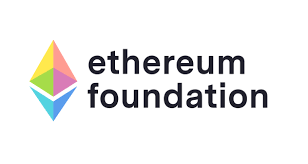
Job Title: Javascript FSDLocation: Montreal, Canada (Remote)
Javascript FSD - Trouble shooting, Java, UI implementation, coordination with offshore/ Onsite, flexible in terms of work, client facing, NodeJS, Javascript
End-to-end implementation in JavaScript typically refers to the process of developing a web application from the initial concept to the deployment of the finished product. It involves multiple stages, including planning, design, development, testing, and deployment. Here's a high-level overview of the end-to-end implementation process in JavaScript:Define Requirements:Clearly define the requirements and objectives of your web application. Understand the target audience, user expectations, and the core functionality the application needs to provide.Planning and Architecture:Plan the architecture of your application, including the choice of front-end and back-end technologies. Decide on the overall structure, data flow, and interaction between components. Consider the use of frameworks and libraries that align with your project goals.Design User Interface (UI) and User Experience (UX):Create wireframes and mockups to design the user interface and user experience. Pay attention to the visual design, layout, and usability of the application. Tools like Figma, Sketch, or Adobe XD can be helpful for design prototyping.Front-End Development:Start building the front end of your application using HTML, CSS, and JavaScript. Choose a front-end framework or library if applicable (e.g., React.js, Angular, Vue.js) to streamline development and manage state efficiently.Back-End Development:Develop the back-end of your application to handle server-side logic, database interactions, and business processes. Use a server-side JavaScript framework like Express.js if you're working with Node.js, or choose another technology stack based on your project requirements.Database Integration:Integrate a database to store and retrieve data. Common databases used with JavaScript applications include MongoDB, MySQL, or PostgreSQL. Implement proper data models and relationships.API Development:Create APIs (Application Programming Interfaces) for communication between the front end and back end. Define endpoints, handle authentication, and ensure secure data transmission. RESTful APIs are commonly used for web applications.Testing:Write unit tests to ensure the reliability and correctness of your code. Test front-end and back-end components independently. Use testing frameworks such as Jest for the front end and tools like Mocha or Jasmine for the back end.Integration Testing:Perform integration testing to ensure that different components of your application work together seamlessly. Test the interactions between the front end, back end, and the database.User Acceptance Testing (UAT):Conduct user acceptance testing with stakeholders or end-users to validate that the application meets the specified requirements and is user-friendly.Deployment:Prepare your application for deployment. Minify and bundle your JavaScript files, optimize assets, and configure environment-specific settings. Deploy your application to a hosting provider or cloud platform.Monitoring and Maintenance:Implement monitoring tools to track the performance and health of your application in production. Address any issues that arise and regularly update your application to introduce new features or fix bugs.Documentation:Document your codebase, APIs, and any necessary setup procedures. This documentation is crucial for future maintenance, collaboration with other developers, and onboarding new team members.Scaling (if required):Plan for scalability by optimizing your code, considering load balancing strategies, and, if necessary, implementing horizontal or vertical scaling as your user base grows.Throughout the entire process, collaboration and communication among team members are essential. Adopting agile development methodologies can help facilitate iterative development cycles and quick responses to changing requirements. The end-to-end implementation process may vary based on the project's complexity, size, and specific requirements.
Key Skills
Related Jobs

Security Engineer Ubuntu

Senior Software Engineer

Test Automation Engineer

Senior Android Engineer

Lead Software Engineer

Senior Frontend Engineer

Data Engineer

Production Engineer

Senior Back End Developer

Senior Frontend Engineer Platform

IT Engineer

Senior Software Engineer Cloud Images

Senior Product Designer

Hands On Engineering Manager

Full Stack Software Engineer

Senior Front End Developer

Customer Success Manager

Senior Software Engineer .NET Core

Front End TypeScript Developer
